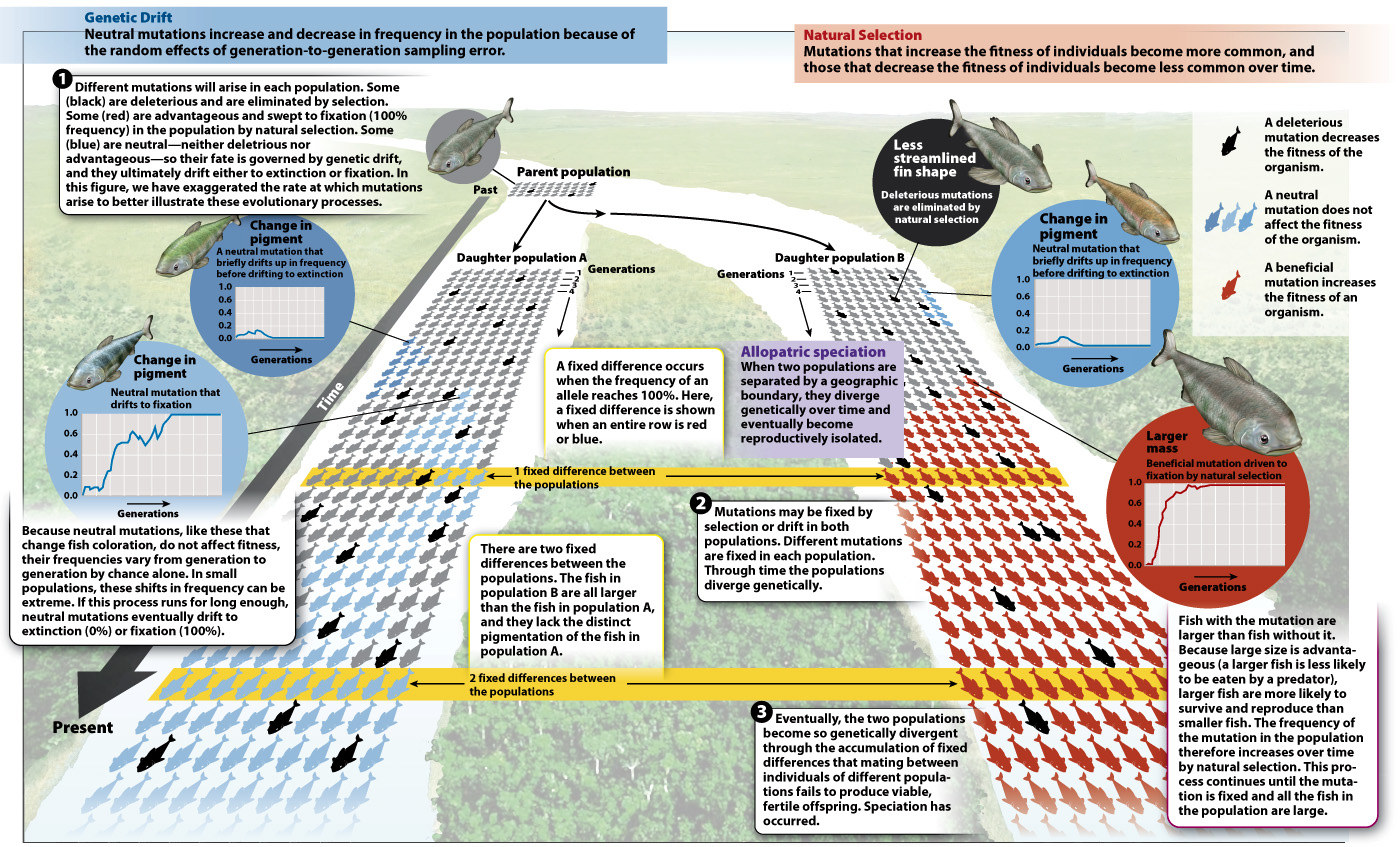Natural selection can enhance reproductive isolation.
There is a third way in which natural selection may play an important role in speciation. In this case, natural selection contributes directly to the process of speciation (rather than contributing indirectly by causing differences among the diverging populations), when individuals better at choosing mates from their own group are selectively favored over those that frequently mate with members of the “wrong” group.
Recall the two hypothetical bird populations, one with large bills and the other with small bills, whose medium-billed hybrid offspring are at a disadvantage because of a lack of medium-sized seeds in their environment. If a large-billed individual cannot distinguish between large- and small-billed individuals as potential mates (that is, there is a lack of pre-zygotic isolation between them), it will frequently make the “wrong” mate choice, picking a small-billed individual and paying a considerable evolutionary cost of producing poorly adapted hybrid offspring.
Now imagine a new mutation in the large-billed group that permits individuals carrying it to distinguish between the two groups of birds and to mate only with other large-billed individuals. Such a mutation would spread under natural selection because it would prevent the wasted reproductive effort of producing disadvantaged hybrid offspring. This is an example of reinforcement of reproductive isolation, or reinforcement for short. Reinforcement is the process by which diverging populations undergo natural selection in favor of traits that enhance pre-zygotic isolation, thereby preventing the production of less fit hybrid offspring. In this case, enhanced pre-zygotic isolation takes the form of mating discrimination, an increased ability to recognize and mate with members of one’s own population.
The best evidence in support of reinforcement comes from a study of related fruit-fly species living either in allopatry (geographically separated) or sympatry (not geographically separated). Sympatric species evolve pre-zygotic isolating mechanisms more rapidly than allopatric species. Why would this be? When the two populations are geographically separated, the formation of less fit hybrids is impossible since the two populations do not interbreed, so a mutation that increases mating discrimination between the two groups would not be favored by natural selection. In sympatry, however, where the production of less fit hybrids is a problem, such a mutation provides a fitness benefit, so natural selection favors its spread in the population and reinforces reproductive isolation between the two groups.
Fig. 22.15 summarizes the evolutionary mechanisms that lead to speciation. Speciation is caused by the accumulation of genetic differences between populations. Mutation is therefore a key component of the process, but so, too, is the fixation process whereby mutations go to 100% in a population (Chapter 21). A mutation can go to fixation by selection if it is advantageous and by genetic drift. The differences that accumulate between diverging populations are therefore produced by multiple forces acting over long periods on each population.
Page 460
VISUAL SYNTHESIS
VISUAL SYNTHESIS FIG. 22.15 Speciation Integrating concepts from Chapters 21 and 22

Page 461
